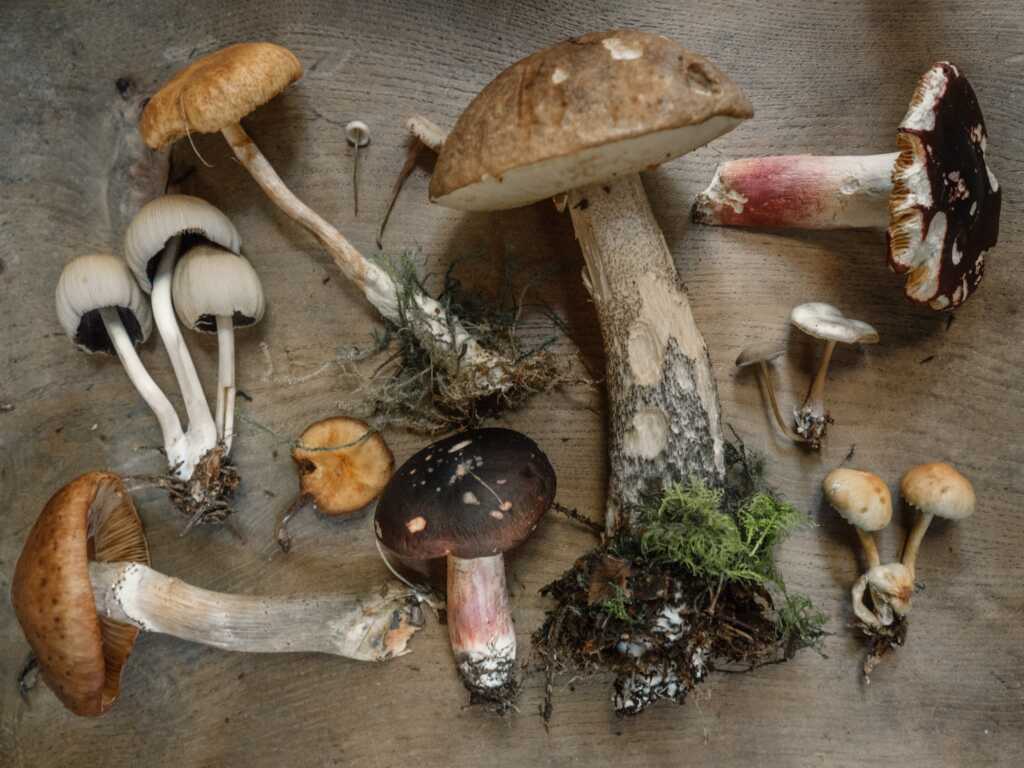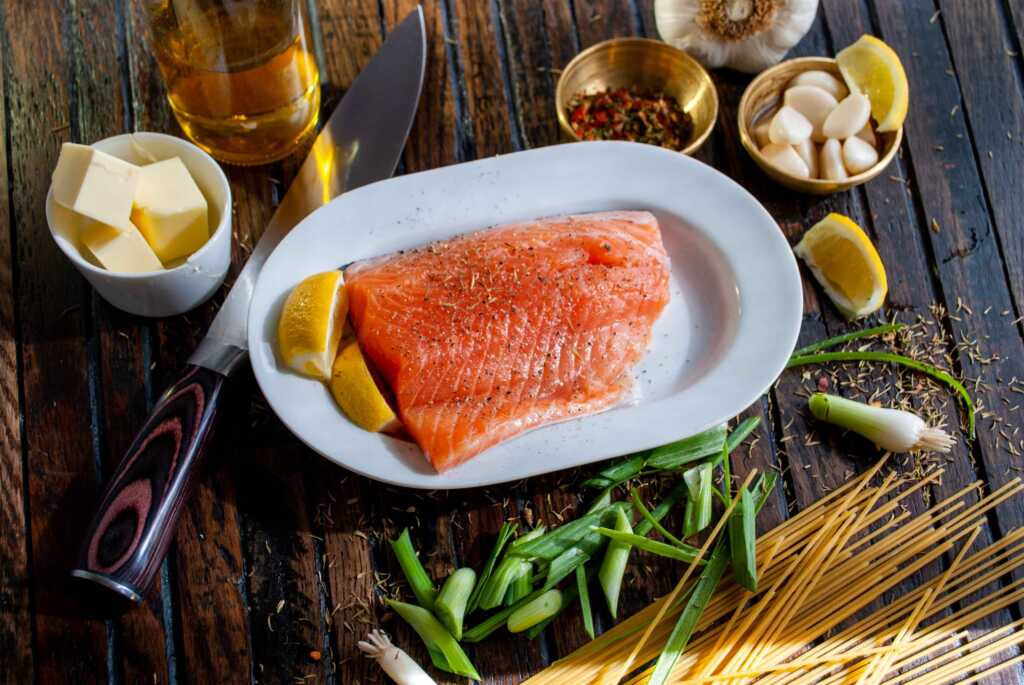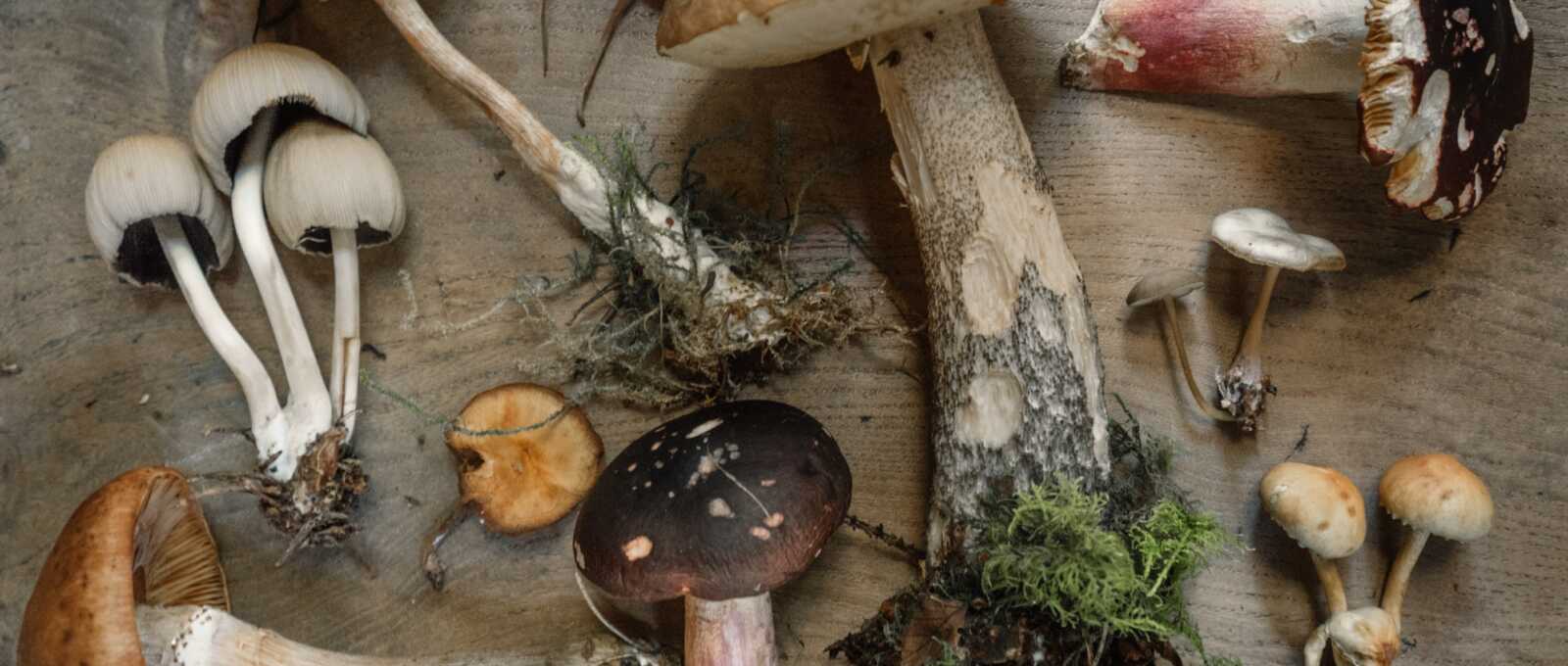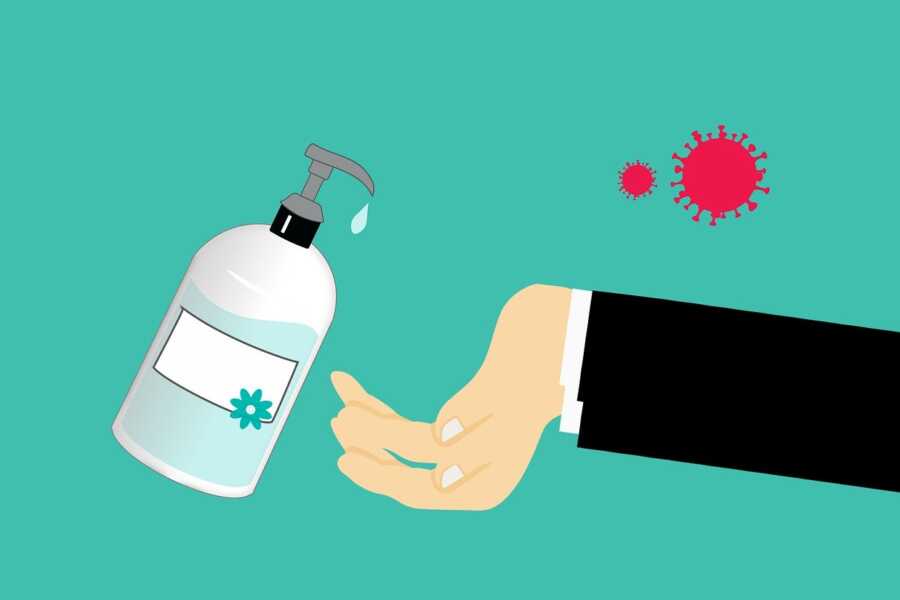A nutritionist shares some quick recipes that contain foods high in Vitamin D. Read on as we unpack whether it is possible to get vitamin D from just food alone.
- Recipe 1: Mushroom Rainbow Soup
- Recipe 2: Jamaican Jerk Salmon
- How Much Vitamin D is in the Salmon Recipe?
- Do All Mushrooms Contain Vitamin D?
- How Many Mushrooms Would You Need to Eat To Get the Required Vitamin D levels?
- Bottom Line (When it Comes to Getting Vitamin D from Diet)

Mushroom Rainbow Soup
Serves: 4
Preptime: 10 minutes
Cooktime: 15 minutes
Ingredients:
1 small onion diced
1 cup cremini mushrooms diced
1 cup carrots diced (or any orange vegetable)
1 cup asparagus chopped (or any green vegetable)
1 tsp crushed garlic
1 tsp crushed ginger
1 tsp dried basil
1 tsp dried oregano
½ tsp pepper
½ tsp salt
1 tbsp vegetable oil
2 cups bone broth (or any other broth)
Directions:
- Heat oil in small pot
- Add all vegetables and stir fry for 5 min, until tender but not soft
- Add garlic, ginger, basil, oregano, pepper, and salt, mix well
- Add bone broth and simmer for 10 min on med heat.
- Don’t boil too long or veggies will go mushy.
- Serve with your favorite crackers

Jamaican Jerk Salmon
Serves: 4
Prep time: 10 minutes + 2 hours or marinating
Cook time: 8-10 minutes
Ingredients:
4 pieces of salmon (6 oz fillets or steaks)
1 small diced onion or (5 green onions cut up)
4 garlic cloves, peeled and smashed
5 cm piece ginger, peeled and smashed
⅓ cup fresh lime or lemon juice ( 2 fresh limes or 1 fresh lemon)
¼ cup soy sauce
1-2 tbsp honey (or brown sugar)
1 Tbsp vegetable oil
1 Tbsp dried or fresh thyme
1 tsp black pepper ( can substitute for chopped jalapeno or green chili)
½ tsp ground cinnamon
½ tsp nutmeg
Directions:
- Place fish in resealable plastic bag
- Blend all ingredients in small food processor, until finely chopped and blended.
- Pour mixture into bag over the fish and let it rest in fridge for 2 hours or overnight
- Grilling: Preheat a gas grill to med-high ( about 400 degrees) OR Pan fry: Preheat to med-high
- Rub lightly with oil, using tongs and an oiled paper towel
- Grill fish side down for 4-5 min, then turn once for another 4-5 min or until fish is opaque
(Can serve with mixed salad, grilled mixed vegetables and rice)
How Much Vitamin D is in the Salmon Recipe?
It’s actually hard to say because it depends on so many factors. According to the National Institute of Health, 6 ounces sockeye salmon is predicted to be around 894 IU[1]. (Click here to read abou more natural food sources). However, the amount of vitamin D you are getting can depend on many factors such as the species of fish and whether the fish is farmed or fresh. There is a lot of variability even within species and as an example, this study found that farmed fish has 25% of vitamin D levels to wild fish[2].
Do All Mushrooms Contain Vitamin D?
In order for mushrooms to contain vitamin D, they need to be exposed to UVB (either from direct sunshine or artificial ultraviolet lights). So if they are grown in warehouses without much light, they may not contain a lot of vitamin D.
Mushrooms are the only naturally sourced vegetable that contains vitamin D2. Mushrooms mainly contain D2 but may have lesser amounts of D3.
Generally speaking, most mushrooms bought from grocery stores don’t contain a lot of vitamin D because growing rooms don’t contain much light. If you’re interested in using mushrooms as your source of vitamin D, you can sun dry mushrooms (if you have access to sunlight!) or place them under a UVB lamp (be careful with this option because UVB can be damaging to skin and eye).
Even if the mushrooms have already been sliced or dried, they still have the ability produce vitamin D. As an example, when fresh button mushrooms were deliberately exposed to the midday sun for 15–120 mins, they generated significant amounts of vitamin D[3].
How Many Mushrooms Would You Need to Eat To Get the Required Vitamin D levels?
These exact metrics are still being investigated. But for those interested here’s a small study comparing 26 people taking vitamin D2 supplements to 26 others ingesting 120 grams (about a handful) of vitamin D-enriched mushrooms four times per week for five weeks. Researchers at the University Medical Center in Frieburg, Germany found that the serum levels of vitamin D were similar[4].
Bottom Line (When it Comes to Getting Vitamin D From Your Diet)
Eating foods rich in Vitamin D is a great way to boost your levels. But, it is challenging to figure out the amount of vitamin D you are actually getting! If you think you are at risk for low vitamin D, it is helpful to talk to a health care professional to figure out if you are getting enough. Also think about getting enough sunlight (if possible) or taking supplements to hit the daily requirements.
Authors:
Shirzad Chunara, Nutritionist, MHSc.
Edited and Reviewed by: Aliya Kassamali, PharmD
References.
1. National Institute of Health. (2019). Vitamin D Fact Sheet. Retrieved from https://ods.od.nih.gov/factsheets/VitaminD-HealthProfessional/#h4
2. Lu, Z., Chen, T. C., Zhang, A., Persons, K. S., Kohn, N., Berkowitz, R., Martinello, S., & Holick, M. F. (2007). An evaluation of the vitamin D3 content in fish: Is the vitamin D content adequate to satisfy the dietary requirement for vitamin D?. The Journal of steroid biochemistry and molecular biology, 103(3-5), 642–644. https://doi.org/10.1016/j.jsbmb.2006.12.010
3. Cardwell, G., Bornman, J. F., James, A. P., & Black, L. J. (2018). A Review of Mushrooms as a Potential Source of Dietary Vitamin D. Nutrients, 10(10), 1498. https://doi.org/10.3390/nu10101498
4. Urbain, P., Singler, F., Ihorst, G. et al. (2011). Bioavailability of vitamin D2 from UV-B-irradiated button mushrooms in healthy adults deficient in serum 25-hydroxyvitamin D: a randomized controlled trial. Eur J Clin Nutr 65, 965–971. https://doi.org/10.1038/ejcn.2011.53



Leave a Comment